PREPPER: You must act fast when SHTF: What to do in the first hour
LATEST FROM THE PREPPER WORLD...
Do your prepping now while you still have time. If you don’t have BOBs for your family yet, start packing them. Make sure your bug-out vehicle is full of supplies and that it can take you to safety at a moment’s notice. You won’t have the luxury to shop when disaster strikes and other people start panicking around you.
Here’s what you should do in the first hour after SHTF: (h/t to PreppersWill.com.)
- Get your priorities straight and address them. In the first 60 minutes after a survival scenario, your security is your priority. Once you’ve guaranteed the security of your group, you can start worrying about other things.
- Determine the main problem. After you’ve ensured the safety of your group, try to find out what happened. You only have at least 30 to 60 minutes following a survival scenario because you might have to evacuate soon. Do take note that the information you receive may be contradictory, especially within this time frame, so use your discretion. Monitor the news on TV and radio to identify any possible dangers so you can prepare for them.
- Do you bug out or hunker down? Now that your family is safe and you’ve determined the reason why SHTF, decide if you’re going to bug in or bug out. As a rule of thumb, if you’re anywhere near ground zero, try to go as far as you can. If the threat is not an immediate one, it may be safe to bug in with your BOBs and supplies.
- Practice makes perfect. You need to be ready because the 60 minutes after a disaster might not be enough to pack everything you might need in your vehicle. Do you have a backup plan if your car breaks down? Practice walking a couple of miles while carrying your BOB so you won’t struggle if you have to carry one while on the run. Talk to your family so everyone knows where to meet up, especially if you’ve split up and hour before SHTF. Make sure to practice evacuation drills regularly so your family can stay calm if you have to evacuate.
- Don’t draw attention to yourself. An hour after a disaster scenario, the last thing you should be doing is telling strangers about your supplies and BOBs. You’re prepping for you and your family, not other people.
Supplies to stock up on
When SHTF, you need to prepare all sorts of gear and supplies. Aside from food, don’t forget to stock up on these medical and health supplies:- Baby/Toddler Supplies — If you don’t have a baby, items like cloth diapers, formula, toys, and washcloths can be used as bartering tools.
- First aid kits
- Herbal supplements/vitamins
- Hygiene supplies – Feminine hygiene products, floss, shampoo, toothbrushes, and toothpaste.
- Toilet paper
- Wine/liquors – Alcoholic drinks are good bartering tools and they can be used medicinally, such as vodka.
Scavenging: The Art Of Survival And Resourcefulness When The SHTF
JAMES RYAN
Many preppers are well-prepared for the first 72 hours of a bad situation. This is because most crises are resolved within that window. However, many of us are unprepared for what might happen in the days or weeks after a major incident. James Ryan will discuss how a prepper can resource themselves in the weeks after the shit has hit the fan through scavenging.
Summary
- Scavenging and looting are different. Scavenging is a moral and situationally aware method for survival.
- Scavengers should consider the journey products take from creation to use to waste.
- Scavengers should also think beyond short-term situations and needs.
Scavenging vs Looting: There is a difference
First, it is important to define scavenging. Many people use the two interchangeably, but in all reality, looting and scavenging are quite different.However, scavenging is different to looting, because it is a context-specific and morally-guided process where a person seeks to improve their chances of survival. As a result, those about to engage in scavenging need to be situationally aware, and clear about their morals.

Situational-awareness and morals are key factors. The consequences of your actions could directly or indirectly lead to the loss of life. Morals could be described as a standard of right and wrong. Regardless of how much shit hits the fan, it is a temporary experience and you your inner circle will spend the rest of your lives analyzing those difficult, heat-of-the-moment choices. These moral standards need to be clarified with your inner circle before any doomsday event.
Our morals set us apart from our enemies, domestic and abroad.
You also need to set yourself apart through situational awareness. When the shit hits the fan, you have to consider how long the situation is likely to last, and what the broader consequences of a decision might be.
If you come into contact with some food supplies, it is important for you to minimize waste, only take what is needed, and redistribute the excess where possible. There is no point having a cache of canned food when less-prepared people are starving. An ignorant decision could compromise society’s ability to consolidate and repair. A fractured society is destined to be ruled by a greater, more organized power; therefore, scavenging should not compromise social cohesion.
Things to Consider When Planning Your Scavenge Approach

Furthermore, you shouldn’t limit yourself to scavenging for the short term. The scavenging phase is a temporary phase, but there may be a situation where certain stores start to run out. It goes without saying, the things that catch preppers off guard are more likely to destroy them than things that they are prepared for. Therefore, while you are undertaking the scavenging phase, you should also be planning for the next phases.
Preppers should think about the needs of the inner circle, natural threats (e.g.: seasonal weather), and internal and external forces.
For example, scavengers who foresee a food shortage should look out for seeds and hunting equipment. Therefore, scavenging should involve strategic planning. Questions should be considered when planning what you are scavenging for, such as:
- ’What do we need?’
- ‘Why do we need it?’
- ‘Where can we find it?’
- ‘How are we going to store or carry it?’
In the case of a nuclear or EMP attack, where there a country’s ability to supply its population with products (including food) can be destabilized, scavengers should consider the journey those products take from origin to disposal.
Most of our products follow similar journeys. If we think about this journey, we can get a good idea of where to look when the supermarket runs out of food, the pharmacy runs out of medical supplies, and more.
If we think of the journey our food needs to take to go from farmer or production line and waste bin, we will find quite a number of places that scavengers should target. So where are these places? Some prime scavenger resource spots would be:
- Farms
- Supply lines (trucks, ships, train, and autos)
- Distribution centers (warehouses)
- Marketplaces
- Abandoned stores
- Processing factories
- Homes
- Rubbish gathering areas
- Waste areas.
It is important to remember that scavenging is a temporary phase that may facilitate further survival phases. We need to be careful not to compromise society’s ability to rebound and drive off other threats. Therefore, scavenging needs to target precise needs, their locations and avoid waste.
25 Things To Improve Your Home Security
MEGAN STEWART
With the state of the world today, it’s likely that you’ve begun to see some changes in your neighborhood. If you’ve witnessed increased activity in your area at night or an increase in “strangers” that seem to be visiting your neighborhood at various times of the day and night, it may be time to step up security. Luckily, there are some quick things to improve your home security that you can do gradually or in phases, without breaking the bank to do it.
#1. Use Your Locks…
…that are already in place to keep would be intruders out. You’d be surprised how many thieves will simply move on to the next home if doors at your house are locked.#2. Beef It Up…
by swapping the standard short screws in your locks and door frames with longer less easy to compromise screws. This reinforces your existing locks quickly and easily. When feasible invest in a metal frame and metal door.#3. Leave the Light On…
…outside to make it more difficult for would be thieves to sneak around your yard and get close to your house, shed, or garage without being spotted.#4. Keep Your Mouth and FB Status Shut.
You’d be surprised how many would be thieves and other criminals monitor social media and eavesdrop at local businesses to find out who will be out of town, when, and for how long. Be careful who you brag to about that next vacation or your latest big purchase, it could cost you everything.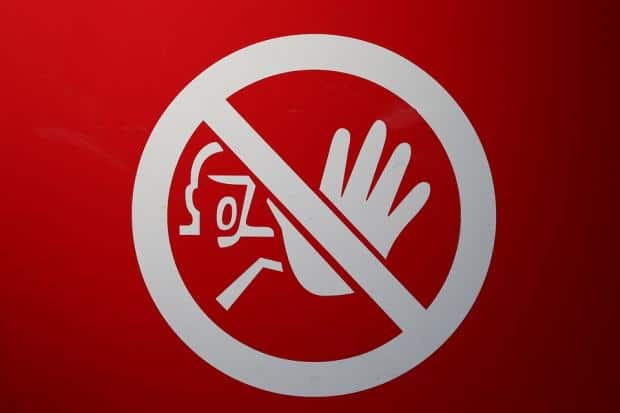
#5. Security System Warning Sign…
…may not do much to deter intruders once SHTF but up until then, just getting a decal for your window or sign in the yard can be enough to make would be robbers think twice.#6. Home Automation…
…via light bulbs, smart curtains, and other tricks to make it appear like you are home when you are out of the house.#7. Keep a Clear Line of Sight…
…between your house and the neighbors on each side as well as the street by trimming bushes and hedges down below eye level. This not only lets you see what’s out there but makes it more likely a neighbor or passerby will intervene if they see something going down at your house.#8. Take Advantage of Technology.
Whether it’s a simple game trail camera in the backyard or a more sophisticated security camera, installing cameras around your home lets you see if someone is casing your home and sends a clear signal to thieves that you are watching.#9. Make Getting In Harder.
Reinforce sliding doors and all entry doors with floor locks and put window stops on the windows to make it that much harder for intruders to get inside. Sure they can break glass but that’s noisy and they risk attracting the attention of your neighbor or waking you. Add safety glass window film to windows. Most thieves will take the path of least resistance.#10. Build Your Network.
You don’t have to share all your secrets with your neighbors but keeping in occasional touch with them and playing nice can make them more likely to give you a heads up when they see someone lurking about your house.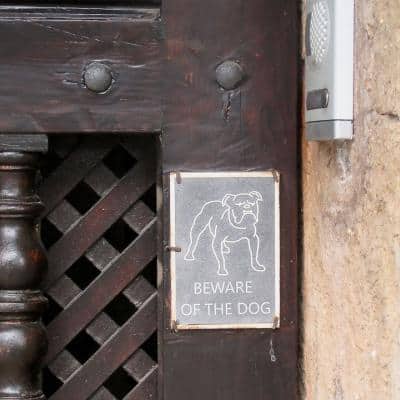
#11. Capitalize on Cynophobia.
Many people have a fear of dogs. It won’t work on all thieves but you can capitalize on this by putting up a beware of dog sign and some other little things in plain sight such as dog toys, a huge dog bone, and a food bowl or dog chain by your back door.#12. Install a driveway gate and keep it locked.
Don’t allow people access to your property unless you can verify their identity, especially in times of crisis.#13. Hang something noisy over doorways at night…
…to give you a heads up if someone is getting in and possibly startle them enough to make them run the other way. Anything that will make noise such as bells that brush the top of the doors when they open will work. The downside is you have to remember to drop them down low enough each night before bed and hook them up in the morning or listen to them any time someone goes in or out.#14. Make Use of a secure indoor safe…
…for valuables, documents, and weapons. If someone does get in when you aren’t home, don’t make it easy for them to get your most valuable items.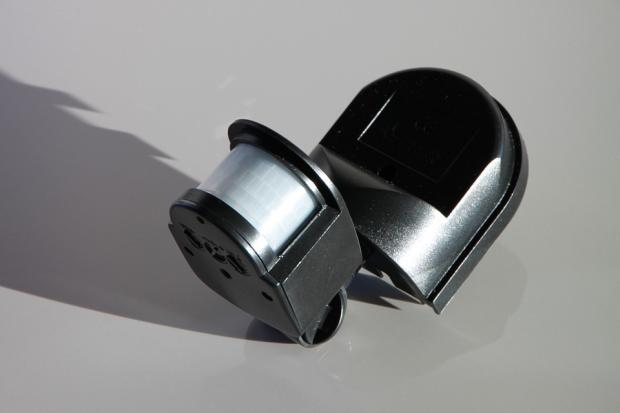
#15. Use solar powered lights or solar powered motion sensors…
…to keep your outside lighting working for you even when the power is out. Power outages are an opportune time for people to try to break in, don’t make it easy for them.#16. Use unfriendly plants and other landscaping around the perimeter of your home that will deter intruders…
…and even those who are just curious. Thorny plants or flowers, impenetrable hedges, and even a lattice with vining or climbing plants can deter unwanted company from coming onto your property.#17. Don’t hide your spare key in the usual places
Any thief with experience and even most new thieves know that people hide spare keys under the welcome mat, above the door, or in a fake rock or other item near the door. Don’t use these usual hiding spots.Use an item that blends into the surroundings that is away from the door where thieves won’t think to look. On the side of the house beneath your bedroom window or behind the shed or the barn will be less obvious. Better yet use a key vault with a code like real estate agents do.
#18. Have important mail sent to a PO Box rather than to your home mailbox…
…to keep your most critical mail safe. I doubt even SHTF can stop the U.S. postal service so better safe than sorry.#19. Eliminate hiding places around your home
Cut back shrubs and trees or bushes near or under your windows and around your doors or along the driveway.#20. Identify and gradually fortify a safe room or area
No matter what security measures you take, there is always the chance that you will fail and an intruder will get into your home. Once this happens your best bet is a safe room or area that you’ve fortified in advance.#21. Use decoy supplies and weapons
Most thieves won’t know in advance if you have weapons or supplies. They’ll take what they see or can find easily and be happy with that. If you leave an old gun and small bills where it can be easily found, you may trick the thieves into thinking that’s all there is and they won’t look further.#22. Email a list of serial numbers and photos of appliances, electronics and other assets to yourself every three months.
If things are stolen during non-SHTF times, you’ll have something to start from for insurance purposes.#23. Close It Up
Don’t leave your garage door open during the daylight hours for everyone to see the great toys and other things you have that they may want. You’d be surprised how often thieves decide their targets by cruising through and checking out open garage doors.#24. Keep your vehicles locked up
This includes your car, motorcycle, ATV, boat, or RV. You’d be surprised how often vehicles are ransacked simply because the thief found it unlocked.#25. Stay Alert and Learn Self-Defense
Two of the best ways to improve security around your home are to stay alert to your surroundings and learn self-defense. Both of these skills may mean be the reason you get to keep your life in some situations and can certainly help deter a would-be thief.Preparing for an Economic Collapse: When, Why & How
Most of you know that preparing for an economic collapse is one of my top priorities. The main reason an economic collapse is a big priority is because it could happen at any time, and it seems like no one even cares anymore that we are trillions in debt.
Politicians don’t care about the national debt, they care about getting reelected, and if you think they are going to be the ones who say “we need to make huge spending cuts” you’re kidding yourself. They would never get reelected because the people in this entitled society that we’ve become would have none of it.First off, I have to say no economist by any stretch of the imagination. I understand that government economics and budgeting and home budgeting are completely different. With that being said, I am not so naive to think that this business as usual approach, and massive government overspending is just “how government works”, Regardless what they would like is to believe.
According to some experts, when factoring in unfunded liabilities like Social Security, Medicare, government pension plans and Obamacare, estimates put the real national debt somewhere around $200 trillion.
Let me got off my soap box here and just say, at some point, something has to give. How that looks, when it happens, and what the repercussions are no one knows. One thing is certain though, if we continue on this path, something is bound to give.
What Else Could Cause a Collapse
When we think about the dollar collapsing sending the United states into the next great depression, we tend to think about government overspending. The reality is, there are many things that could cause an economic collapse.Just think what an EMP would do to our economy. An EMP would take out the power grid, bringing everything to a halt. This means people would lose jobs, manufacturing would stop, and the economy would suffer severely.
War and global conflicts, and even terrorism could also lead to an economic collapse. While terrorism may not cause a complete collapse, it could affect the economy. With our economy being more global as time goes on, there are a number of factors that could trigger a collapse.
Different Types Of a Collapse
As preppers we tend to think “worse case scenario” about everything. But there are so many variables that go into the economy, it’s tough to say how severe it would be. It very well could be a complete collapse, but it also could be a slow decline, a depression, or something that happens quickly for a short period of time.Even if it is a depression type even, or something short lived, it could have dire consequences for you on a personal level. If you lost your job for as little as a month, that could affect you and your family for a long time after you get a new job. This is why having food storage is so important, it gives you a buffer until you get everything back on track.
What to Expect From an Economic Collapse
As we said in a past podcast, people will become the X-Factor in a crisis. An economic collapse is just the type of scenario that would cause people to become dangerous. Again, there are many variables that we need to consider, such as what caused it, how severe is it, and how close we are to population centers.In a complete collapse there would be Civil Unrest, Martial Law, and crime would become a major problem. Desperate people do desperate things, and even the most virtuous person would do what it takes to survive.
In the initial stages there would most definitively a run on banks, and bank holidays. Just about everyone these days keep their money in the banks, and people without some cash on hand will be fighting to get their money.
Manage Your Money
In the show we talked about how there are a number of steps we can take to minimize the affects and economic collapse would have on us. The great thing about paying attention to your money, and being smart about your spending habits is that it’s good to do regardless whether a collapse happens or not.Investing in silver, and having cash at home is something we have done for a while now. Some people say that silver and cash will be useless in a collapse scenario which is both true and false. In a large scale collapse yes, it would probably be some time before your silver had any value. But in a depression type event, it wouldn’t hurt to have saved a bit in advance.
Another side affect of the economy taking a deep plunge is job loss. In the show we talked about what jobs are “Collapse Proof”, and what jobs may be nonexistent. People in the medical field may still have a job, but at a much lower pay rate. People in construction or office workers may find it tough to find work.
This is a reason why having marketable skills is important. In the event you lose your job, you may find yourself bartering your skills and becoming a handy man of sorts.
Preparing For An Economic Collapse
Another reason I make preparing for an economic collapse one of my priorities is because it encompasses every area of preparedness. As you prepare for a economic collapse, you are inevitably preparing for other disaster scenarios.Most disasters would be short lived, and you would know fairly quickly whether or not you were going to get through it. A collapse could be something that requires a longer term preparedness plan. How much you prepare depends on your situation, but this could last anywhere from a few months to a few years.
The most important thing is to stay vigilant and pay attention. Watch what is going on in Venezuela right now, and pay attention to how the government is reacting, how the people are reacting, and what the major issues are.
11 Survival Foods You Should Always Have at Home
ASHLEY HETRICK
Most of us have heard that the average American has less than 3 days worth of food at home. That means we’re only 72 hours away from a food riot should supply lines be disrupted. Even if you don’t have the money on hand to invest in food storage, there are certain foods you should always keep on hand to form the basis of your survival meals.1. Baby Formula
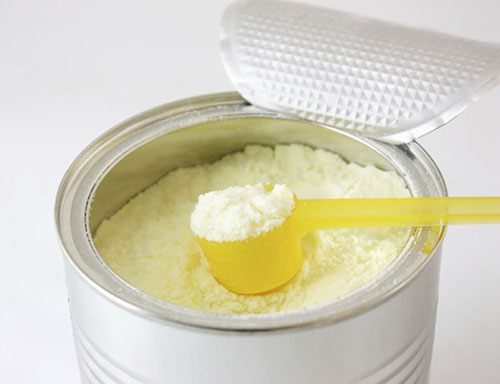
Really? Even if you don’t have babies? Yes!
Baby formula is designed to be everything a body needs to survive. Infants live exclusively on formula. No water. No solid food. Nothing else.
Powdered infant formula tastes a whole lot better than powdered milk, and it’s better for you. Dried and sealed, infant formula lasts for years.
Related: How To Choose, Use & Store Protein Powder for Preppers
Beyond that, if you’re planning to survive for the long haul, you never know when there may be an infant that needs tending. While breastfeeding is an obvious solution, there are many reasons why that might not be possible.
If you’re storing formula powder, make sure you use clean or sterilized water to reconstitute it.
If you’re adamantly against baby formula for whatever reason, consider protein powder. It wont help you feed infants, but it’s nearly as versatile when it comes to feeding adults and older children.
2. White Flour
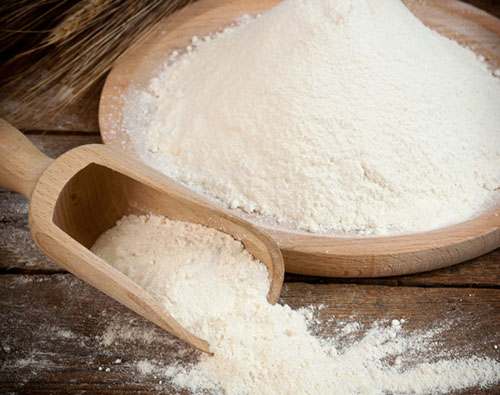
White flour lasts for a year, and has a surprising amount of protein. While historically, people living on a mostly white flour diet had trouble with nutritional deficiencies, modern flour has vitamins and minerals added to it.
More importantly, white flour lasts forever. If kept sealed and dry, you can eat white flour a decade from now and not know the difference.
Related: How to Make Acorn Flour
With a little know how, all you need is white flour, water and salt to make good bread using wild yeast.
3. Coconut Oil

Along with white flour, a ready source of fat will go a long way to boost moods and fill stomachs. Coconut oil has a long shelf life, and manufacturers say it should be good as the day it was bought for 2 years. Practically speaking, it’s good much longer than that, and you likely wont notice a difference if you’re eating 5 year old coconut oil that’s been properly stored.
Unlike many other types of oil, coconut oil has the added benefit that it’s tasty even if you don’t have facilities for cooking. Mash in a bit of sugar and coco powder and you’ve got yourself coconut oil truffles for comfort food and a ready source of energy, no cooking required.
4. Salt

Salt is often touted as a survival food, but in reality you don’t actually need to eat much salt to survive. Very small amounts will keep you healthy, and you’ll need to learn to adjust from our modern salt heavy diet.
The real reason to keep salt is for food preservation. If you happen to be lucky enough to acquire fresh meat, salt is the only thing you need to keep it from spoiling. Charcuterie is the art of preserving every part of the animal with little more than salt and technique, and transforming it into something spectacular in the process.
Before you find yourself in a survival situation, learning the basics of preserving meat without refrigeration could mean the difference between surviving and thriving.
In a pinch, cover the meat in salt. A lot of salt. Cover it completely and keep it covered. It may not quite be the same as prosciutto, but it wont spoil.
5. Home-Canned Fruits, Vegetables & Meats
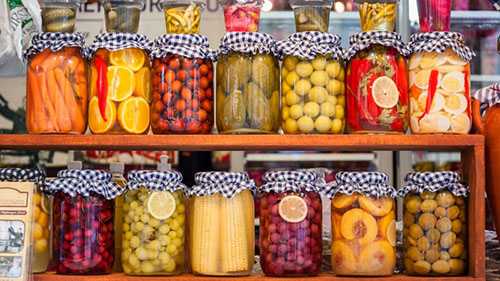
You’ll notice I say “home canned” rather than purchased. Why?
Because once you open up a can of home canned hamburger, pasta sauce or potatoes, you still have something very valuable: a canning jar.
Beyond that, if you canned them yourself you also have the knowledge to do it again. Store bought canned food will get you through the short term emergency, but the knowledge and equipment to refill those jars will carry you through the long haul.
If you’re going to spend money buying food, my personal preference would be dried fruit and meat. Dried fruits and meats are light and portable, and keeping a store of water and dried fruits is much more versatile than a store of canned foods.
Beyond that, in a cold climate, canned foods may freeze and blow their seals unless keeping the storage room climate controlled. I’d rather focus on keeping my family warm than having to worry about keeping the food at a good temperature at the same time.
Canned food is handy in many situations, because it’s instant. You can open up a can and eat it as is with no preparation. That convenience alone is worth keeping canned food around. But for the best use of my dollar, if I’m going to store canned food, it’s canned food that I’ve put up myself at little cost. Also, here are 14 must-have canned foods you didn’t know existed.
6. Dried Fruits and Meat

As I’ve said, dried fruits and meats are versatile. They can be eaten out of hand or boiled along with other foods into a stew if you have cooking facilities. They’re light and travel well in an emergency.
Dried fruits in particular will help keep your digestive system healthy in a crisis. If your diet is otherwise nothing more than white flour and emergency survival foods, having raisins or prunes around to keep things moving along will make everyone a lot happier and healthier.
Related: 7 Super Cheap Foods To Stockpile That People Usually Throw Away
7. Peanut Butter

Not only is peanut butter a comfort food, it’s also full of protein and healthy fats that will keep you satisfied long after a meal. It can be eaten right out of the container for a quick energy boost, and fully sealed containers last for years on the shelf.
8. Vitamins

Nutritional deficiency can destroy your health. In lean times, our ancestors had to contend with not only feeding themselves, but ensuring a balanced enough diet to prevent debilitating deficiencies.
A single cheap bottle of multi-vitamins can balance out nutritional gaps, and allow you to focus on calories rather than vitamin content. Most vitamin brands have way more than the recommended daily amount of most key vitamins, so even a single vitamin per week per person can mean a dramatic improvement to their health.
9. Granola
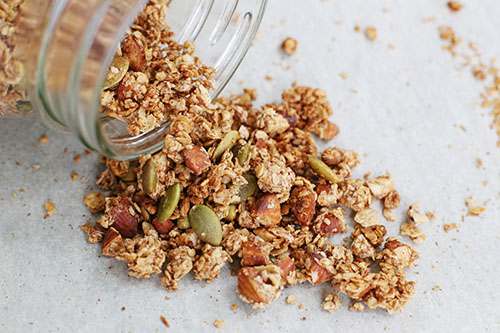
There are a lot of shelf stable snack foods. Why go with granola?
It’s high calorie, with roughly 700 calories per cup, and at the same time it’s nutritionally balanced. The mix of whole grains, nuts and sugars mean that granola is a complete meal that you can eat while on the move.
Granola also has a long shelf life, and it’s light and portable.
10. Dry Beans & Rice
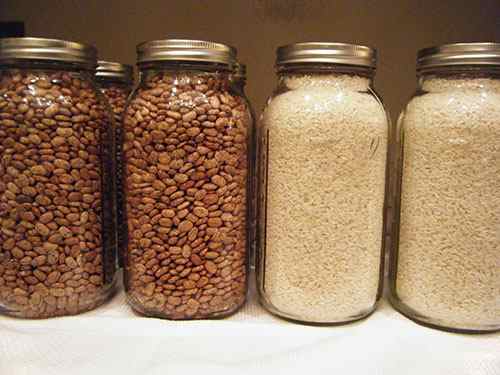
I’m calling this a single item, because you should always keep both beans AND rice. Together they form a complete protein and the contents of a 5 gallon food storage bucket can feed you for a month for about $20. Assuming you have the fuel to cook, there’s no better way to store calories and nutrition than a balance of beans and rice.
11. Sugar

With a grocery store just around the corner, sugar is cheap and readily available. For now. In an emergency, sugar is a excellent source of energy and it’ll be scarce without global trade.
Sugar can also be used in food preservation, which will expand your foraging options.
SOURCE

